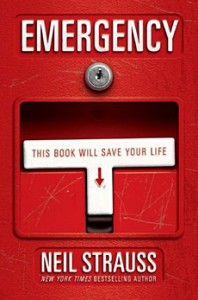
We’ve published the list here in it’s entirety, because we think it’s excellent information that everyone should know if they don’t already.
If you haven’t had a chance to read Strauss’ book, we highly suggest you add it to your reading list. There is a wealth of information contained inside and should be read by anyone who has even considered preparing for the worst.
TOP TEN MYTHS OF EMERGENCY AND DISASTER PREPAREDNESS
1. MYTH: If stranded in the desert, you can get water from a cactus.
TRUTH: Chances are you won’t be able to get more than a few drops of water from a cactus, it will taste bitter and acrid, and it could lead to cramps and vomiting. Morning dew, transpiration bags and looking for sings of small springs, stream beds and rock depressions with water will serve you better.
2. MYTH: If attacked by a shark, punch it in the nose.
TRUTH: You’re more likely to injure your hand than the shark if you hit it in the nose. Instead, if an attack is otherwise unavoidable, strike the eyes and gills as rapidly and hard as possible, ideally with a sharp object. Animals, like people, don’t want to get in fights they may lose.
3. MYTH: In the event of an earthquake, the safest place to stand is a doorframe.
ALTERNATE MYTH: In the event of an earthquake, create a “triangle of life” by curling up next to a bulky object that will compress slightly on impact, leaving a void next to it.
TRUTH: The tip about standing in a doorway was true when homes were made of weak materials with wooden doorframes; however, in most modern buildings, the doorframe is the weakest point.
The triangle of life is only really applicable to homes in third world countries, with flat ceilings that will pancake straight down. Instead, drop, cover and hold on under a sturdy object like a desk or table.
4. MYTH: If a bomb goes off, call 911.
TRUTH: Avoid using your cell phone or radio in the vicinity of a possible terrorist attack, because it can trigger a possible secondary device.
5. MYTH: If bitten by a poisonous snake, suck out the venom.
ALTERNATE MYTH: Cut an X over the snakebite to get the venom out.
TRUTH: You will not be able to cut or suck fast enough to slow the spread of venom – and getting venom in your mouth will only create a new pathway for the poison, especially if you have cuts in your lips or gums.
Don’t apply ice or a tourniquet either. Instead, call 911, cleanse the wound, keep the limb below the level of the heard, wrap it in elastic pressure bandage, splint it and keep physical activity to a minimum while waiting for an appropriate antivenin.
6. MYTH: If stranded at sea with no water, you can drink your own urine to survive.
TRUTH: Because your urine contains salt (in addition to potentially harmful waste), it will generally increase dehydration rather than mitigate it. Legitimate sources of hydration in the ocean include rainwater, solar stills, turtle blood and fluid from the spine and around the eyes of fish.
7. MYTH: In the event of an electrical fire, unplug the appliance immediately.
TRUTH: Unplugging an appliance, handling it, touching an outlet, or dousing it with water are all good ways to get electrocuted.
If your appliance is crackling, overheating, or emitting sparks, smoke, or fire, go to the circuit box and trip the specific breaker (or, if in doubt, the main breaker) before calling 911 or putting it out with a class-C extinguisher.
8. MYTH: Store a gallon of water a day per person for three to seven days in your garage or basement.
TRUTH: This is a fact. Many people have garages and basements with concrete floors. If you store plastic bottles on concrete, the chemical reaction between the two materials over time will contaminate the water.
9. MYTH: If stabbed or impaled by something, pull out the knife or object.
TRUTH: This may look cool in movies, but never pull a knife or any other penetrating object from a wound. Call 911, leave the object in place, and pack a bulky dressing around it to keep it stabilized.
The only exceptions are if the object is blocking the airway or must be removed to perform CPR.
10. MYTH: If stranded in cold weather, you can eat snow or ice to survive.
TRUTH: Eating handfuls of snow or ice will lower your body temperature, will waste body energy and may be contaminated. When possible, melt the snow, boil the water, then let it cool before drinking.
(Bonus myth: Drinking alcohol, even when strapped to the neck of a St. Bernard, not only won’t keep you warm but will cause your body to lose even more heat – however, you can always cuddle up to the St. Bernard for warmth.)
11. MYTH: Praying won’t help you.
TRUTH: Studies of the traits of survivors have noted one thing they all had in common was prayer, even if they didn’t necessarily believe in god. Prayer helps keep one’s thoughts organized and mind focused. After all, the greatest survival skill one can have is to avoid panicking in an emergency, and instead to stay calm, organized, focused, decisive and determined.
This list was sent out by Neil Strauss via his Email list, where he stated that if anyone had any tips to add, send them to stslimjim@gmail.com with the headline LIFESAVER and he’ll add them to an updated version.
Alternatively, we’d also love to hear any additions that any of you may have. Post them in the comments, and lets get some conversation going.